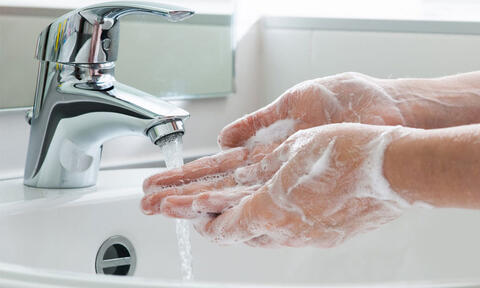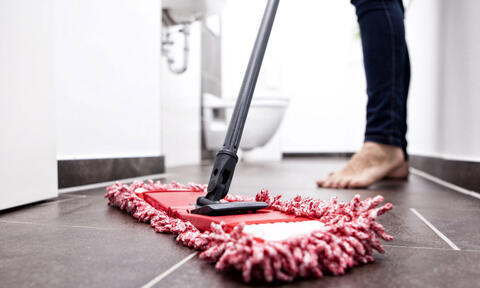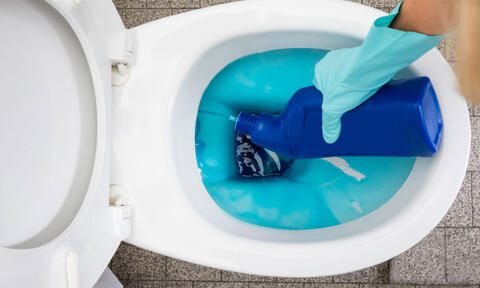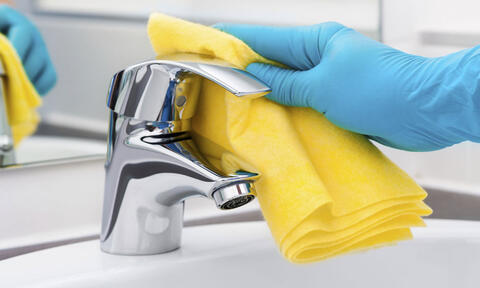
- What Are Bathroom Germs?
- What Causes These Germs in the Bathroom?
- How many germs are in your bathroom?
- How long can these pesky germs survive?
- What can you do to minimise bathroom germs?
- What can you do to avoid any germ-related infections while using public toilets?
Navigate to any section of this post by clicking on the links above.
Who would have thought that not washing your hands can leave over 200 million bacteria, or that failing to put the toilet seat down could contaminate your toothbrush? It’s surprising to many, but it’s crucial to be aware of the germs and bacteria that lurk in your seemingly spotless Bathroom.
You may have seen several advertisements on Television about the implications of bathroom germs, bacteria and possible infections but you’ve likely never given it a second thought.
One quick glance at your bathroom and you may be fooled into thinking that it is spotlessly clean, you’re safe from any poor hygienic implications. That may not be the reality.
We’re giving you the cold hard truth about what lurks behind the sheen and shine of your bathroom.

What Are Bathroom Germs?
Bathroom germs are potentially harmful bacteria and microbes that can cause illnesses such as strep throat, staph infections, salmonella and athletes’ foot. There’s a wide variety of bathroom germs that you may find loitering in your bathroom, many of them potentially harmful.
E.Coli, Salmonella and Staphylococcus Aureus are three of the biggest bathroom culprits. These germs and bacteria are found across bathroom surfaces like toilets, bathroom floors and shower curtains. Shockingly, traces of these bacteria and faecal matter have even been found on toothbrushes!
What Causes These Germs in the Bathroom?
1. The biggest cause for bathroom germs is infrequent cleaning. Sinks, towels, showers, floors even your door handle have been shown to be home to hundreds of millions of bacteria and this is multiplied when bathrooms are not cleaned regularly.
2. Another cause is one that you need to be especially aware of, keeping your toothbrush too close to the toilet. The University of Pennsylvania recommends keeping your toothbrush more than 4ft from your toilet to minimise the risks of E.Coli, Staph infections and Streptococcus.

How many germs are in your bathroom?
According to researchers from Manchester University, these hotbeds of bacteria and fungi can be linked to health conditions such as Legionnaires, Crohn’s Disease as well as general skin, hair, eyes and ear complaints.
There are around 200 million bacteria per square inch on each hand after you visit the average bathroom. Scary right? Not only are there hundreds of millions of them but they can travel across your bathroom, to the sink and insides of showers.
Add to this, a survey of 100,000 found that 62% of men and 40% of women don’t wash their hands after using the toilet! Disgusting. Wash your hands people!

How long can these pesky germs survive?
Hours. Germs aren’t afraid to hang around, significant amounts of these bathroom bacteria survive for hours after each flush of a toilet and hours after a shower too. If your household bathroom is being used every few hours, the breeding ground is continually reset.
According to the NHS, germs like E.Coli and salmonella can survive for as long as four hours. Remember Staphylococcus Aureus, the germ responsible for staph infections? Well, this germ can survive for days or weeks, that should motivate you to keep that bathroom clean.
If a family member or roommate is ill, take extra care to ensure you are frequently wiping surfaces clean with disinfectant.

What can you do to minimise bathroom germs?
While we hope this information doesn’t apply to you, it’s an all too familiar case that people don’t know what lurks behind their bathroom door.
Hopefully, the information we’ve provided to you, about bathroom germs, bacteria and potential infections motivate you to be extra vigilant for these germs. Don’t let germs linger.
- Wash your hands with warm, soapy water (Count your ABC’s twice through when washing)
- Regularly clean your shower, shower curtains and bathroom floor
- Remember, your bathroom is a hotbed for microbial growth. Regular maintenance of your bathrooms is crucial for good hygiene
- Close the toilet lid when flushing to prevent the spread of dangerous microbes and bacteria
- Don’t use the same towel more than 4-5 times
- Wear slippers, walking barefoot in a dirty bathroom can cause athlete’s foot
What can you do to avoid any germ-related infections while using public toilets?
Women’s Health recommends wiping down the public toilet seats with toilet paper before using a public toilet and make sure that you minimise touching any surfaces you don’t need to.
Another way to avoid germ-related infections is to flush the toilet with your shoes if you happen to encounter a public toilet without a lid (Extremely common!). Use clean tissues to open any bins or doors. Below is an infographic that highlights everything you should know about Germs in your Bathroom and the associated risks.
If you would like to learn how to keep your Bathroom sparkling clean, read our detailed guide on deep cleaning your Bathroom.

Other related articles that you might also be interested in: